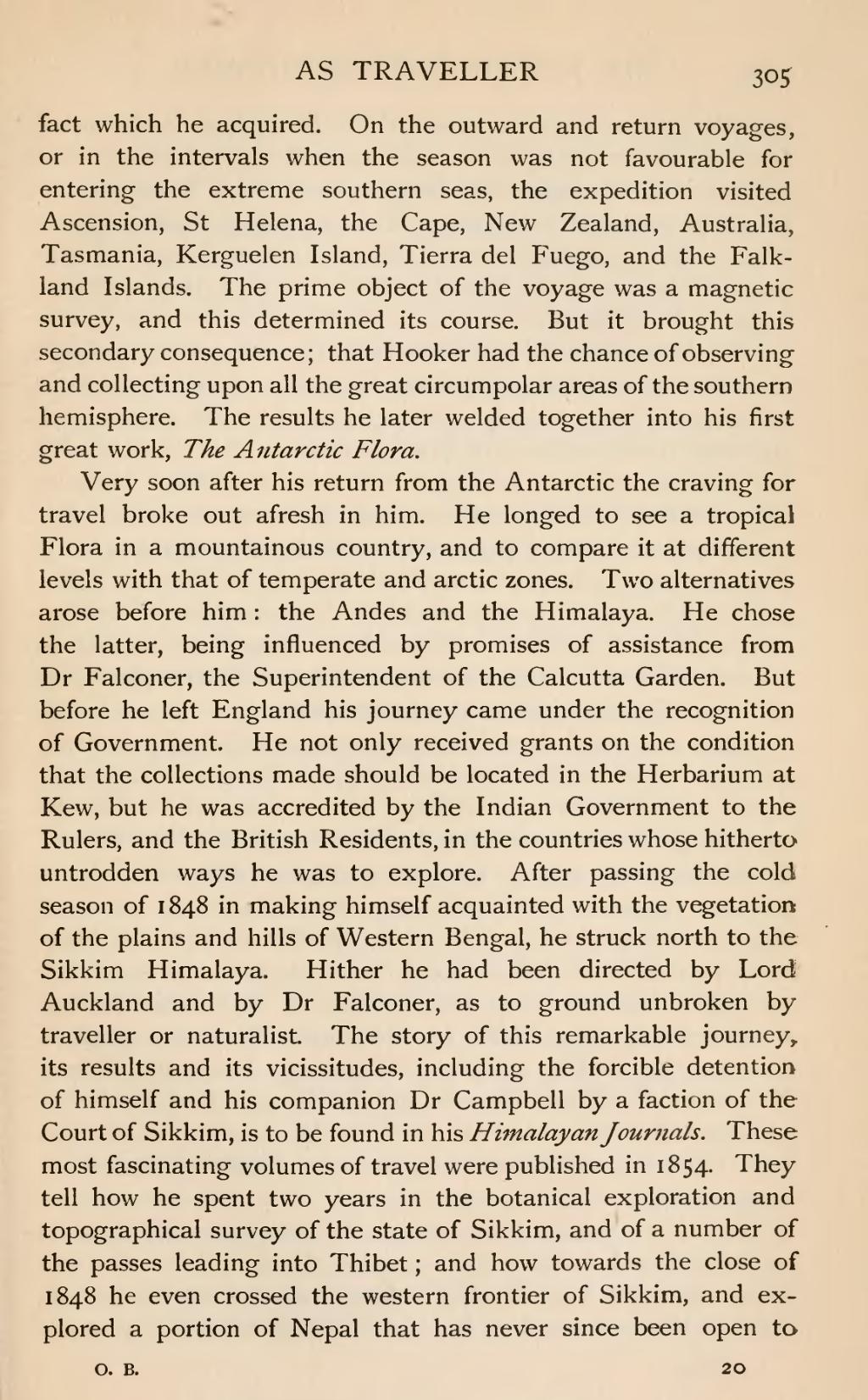fact which he acquired. On the outward and return voyages, or in the intervals when the season was not favourable for entering the extreme southern seas, the expedition visited Ascension, St Helena, the Cape, New Zealand, Australia, Tasmania, Kerguelen Island, Tierra del Fuego, and the Falkland Islands. The prime object of the voyage was a magnetic survey, and this determined its course. But it brought this secondary consequence; that Hooker had the chance of observing and collecting upon all the great circumpolar areas of the southern hemisphere. The results he later welded together into his first great work, The Antarctic Flora.
Very soon after his return from the Antarctic the craving for travel broke out afresh in him. He longed to see a tropical Flora in a mountainous country, and to compare it at different levels with that of temperate and arctic zones. Two alternatives arose before him: the Andes and the Himalaya. He chose the latter, being influenced by promises of assistance from Dr Falconer, the Superintendent of the Calcutta Garden. But before he left England his journey came under the recognition of Government. He not only received grants on the condition that the collections made should be located in the Herbarium at Kew, but he was accredited by the Indian Government to the Rulers, and the British Residents, in the countries whose hitherto untrodden ways he was to explore. After passing the cold season of 1848 in making himself acquainted with the vegetation of the plains and hills of Western Bengal, he struck north to the Sikkim Himalaya. Hither he had been directed by Lord Auckland and by Dr Falconer, as to ground unbroken by traveller or naturalist. The story of this remarkable journey, its results and its vicissitudes, including the forcible detention of himself and his companion Dr Campbell by a faction of the Court of Sikkim, is to be found in his Himalayan Journals. These most fascinating volumes of travel were published in 1854. They tell how he spent two years in the botanical exploration and topographical survey of the state of Sikkim, and of a number of the passes leading into Thibet; and how towards the close of 1848 he even crossed the western frontier of Sikkim, and explored a portion of Nepal that has never since been open to
